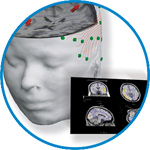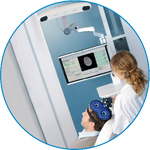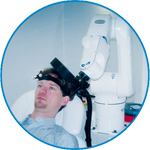- Home
- About ANT
-
Products

asa
asa is a highly flexible EEG/ERP and MEG analysis package with a variety of source reconstruction, signal analysis and MRI processing features.
.jpg)
eego mylab
The new frontier in multimodal brain research. With up to 16 kHz sampling rate, 256 EEG channels and unique software features, eego mylab gives you an unprecedented in-depth understanding of the human brain.

eego sports
eego sports offers complete freedom to collect high-density EEG data, bipolar EMG signals, and a variety of physiological sensor data, wherever and whenever required, with publish quality data in less than 15 minutes!

waveguard net
The waveguard net sets a new standard for research applications requiring high-density EEG data acquisition with quick preparation time, high flexibility, and subject comfort.

visor2
Our new and upgraded visor2 solutions integrate all the latest technologies for navigated rTMS, dual-coil navigation support, EEG-TMS recordings and pre-surgical evaluation for the highest quality in research and clinical procedures.

powerMAG ANT
The PowerMAG ANT 100 rTMS stimulator is designed for the specific needs of high-end TMS applications. Powerful high-frequency TMS as well as high precise single pulse and repetitive pulse protocols are combined in one single device.

xensor
xensor offers the solution for digitization of 3D electrode positions. xensor takes care of the whole procedure; it records, visualizes and stores positions acquired with a dedicated digitizer.

waveguard original
waveguard original is the cap solution for EEG measurements compatible with fMRI, MEG and TMS system. Use of active shielding guarantees performance in even the most demanding environments.

waveguard connect
waveguard connect EEG caps are a perfect match for hospitals and institutes aiming at reliable EEG, maximum uptime and great patient comfort! For optimal signal quality, the electrodes are made of pure, solid tin.

waveguard touch
waveguard touch is a dry electrode EEG cap. The unique Ag/AgCl coated soft polymer electrodes provide stable, research-grade EEG signals while maintaining subject comfort. The combination of these innovative dry electrodes and the industry-leading waveguard cap makes waveguard touch the best solution for dry EEG.

smartmove
smartmove allows planning of a complete TMS session ahead by defining stimulation sites based on anatomical MRI information and functional information like fMRI, PET or EEG/MEG.
Stay - References
- Support
- Events
- News
- Contact Us
You are here
Analysis of working memory from EEG signals under different emotional states
Analysis of working memory from EEG signals under different emotional states
This study analyzes electroencephalography (EEG) measurements during short-term memory retention under different emotional states. A public-domain library with emotion-annotated images (IAPS) was used to stimulate neutral, negative, and positive emotions. The associated EEG data were acquired from twelve volunteers (between 20 and 26 years old; ten males and two females). Each participant was exposed to three sessions back-to-back on the same day. Each session corresponded to the induced emotional states (positive, negative and neutral) and consisted of relaxation, memorization of a list of ten words and ten numbers, watching a set of images to arouse emotion, and recalling the words and numbers memorized earlier. Statistical and spectral features of EEG data were analyzed for two instances: emotion recognition (neutral, negative, and positive) and recall events under the three emotional states. By designing two baseline machine-learning models, support vector machines (SVMs) and K-nearest neighbor (KNN), the significance of the EEG bands and the brain lobes were studied. Experimental results suggest that the short-term (working) memory recalls after exposure to neutral, negative, and positive images (to arouse neutral, negative, and positive emotions) differ from each other significantly (at alpha level 0.001). We have found that each EEG band carries unique information in both emotion and memory recall classification tasks and recommend that the entire EEG signal frequency range must be analyzed in future similar studies. On the other hand, we also have found that each brain region carries similar information as it relates to each task (i.e., memorization, recall), thus only one of the brain regions can be analyzed in future studies in order to avoid complexity and high computation time.

 Read more
Read more.jpg)




